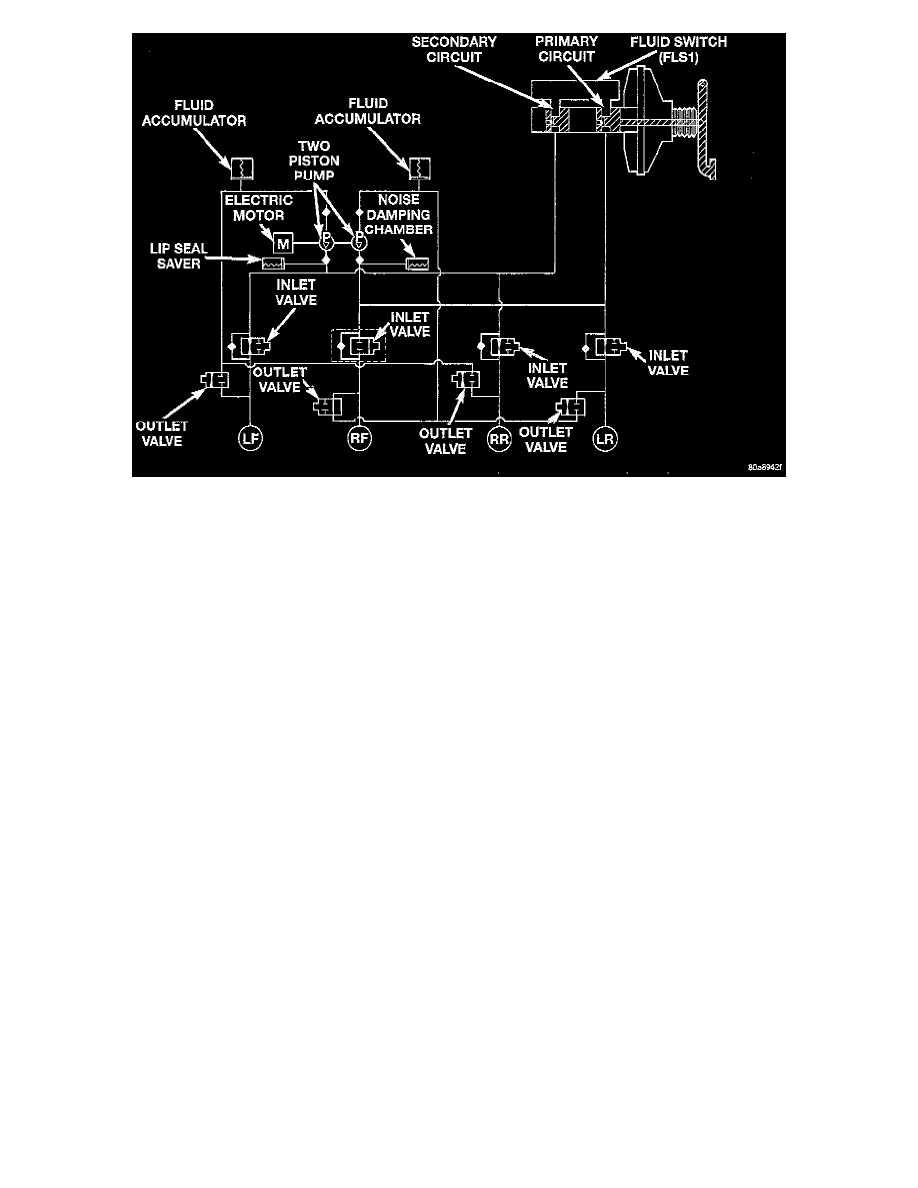Voyager V6-201 3.3L VIN R SMFI (1997)

ABS Pressure Build Hydraulic Control (Right Front Wheel Shown)
ABS Braking Build Mode (Inlet/Outlet Valve And Solenoid Function)
During an antilock stop, the inlet and outlet valves are cycled to maintain the proper slip ratio for the vehicle's wheels. The slip ratio is controlled
by the three ABS control channels, which control the brake hydraulic pressure. If a wheel locks, the inlet valve is closed to prevent any further
hydraulic pressure increase to that wheel of the vehicle. Then the outlet valve is opened to release the hydraulic pressure back to the low pressure
accumulators until the wheel is no longer slipping. Once the wheel is no longer slipping, the outlet valve is closed and the inlet valve is opened to
reapply hydraulic pressure to the wheel of the vehicle. If the wheel is slowing down within its predetermined limit (proper slip ratio) both valves
will close to maintain a constant hydraulic pressure at the wheel. During the stop, the hydraulic build pressure is initially supplied by the master
cylinder. When the hydraulic build pressure is reapplied, brake fluid comes from the low pressure accumulators and the master cylinder which
causes the brake pedal to drop. During the decay cycle, brake fluid is passed through the outlet valve to the low pressure accumulators. Then the
pump/motor pumps brake fluid from the low pressure brake fluid accumulator into the brake system which causes the brake pedal to rise.
